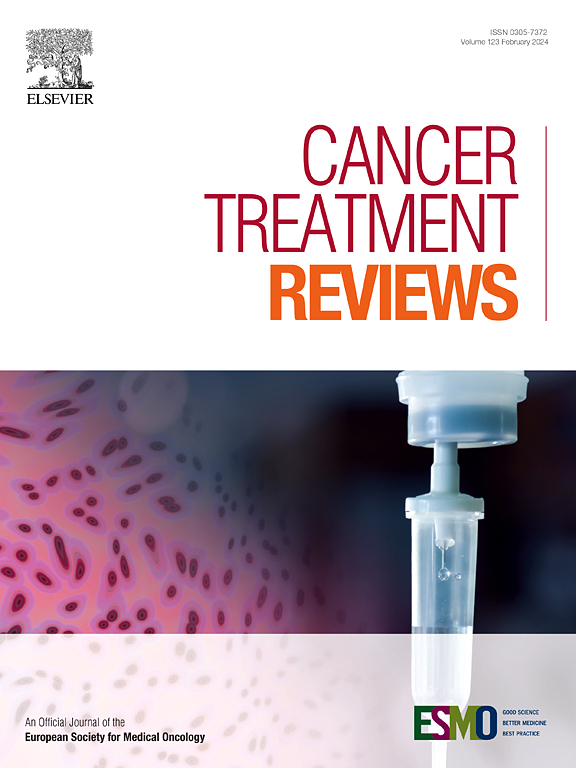From Dose-Finding to Dose-Optimization in Early-Phase oncology clinical trials
IF 9.6
1区 医学
Q1 ONCOLOGY
引用次数: 0
Abstract
Dose optimization in Phase I oncology trials balances therapeutic efficacy and patient safety. Traditional dose-escalation methods, such as the 3 + 3 design, primarily focus on safety, often resulting in prolonged exposure to subtherapeutic or excessively toxic doses. Additionally, these methods may fail to account for modern therapies’ complex pharmacokinetics and pharmacodynamics, including targeted agents and immunotherapies.
Contemporary approaches address these gaps by incorporating biomarkers, pharmacokinetic profiling, and patient-reported outcomes to guide personalized dosing strategies. Such methods improve the precision of dose selection and promote individualized cancer care. This review underscores the importance of distinguishing between dose-finding and dose optimization, advocating for designs that integrate patient perspectives and pharmacologic insights from early-phase trials. Additionally, we highlight the challenges of traditional methodologies and the importance of simplifying complex designs without compromising their scientific rigor. By embracing innovative approaches and patient-centered metrics, Phase I trials can evolve beyond safety assessments to expedite the delivery of effective and tailored cancer therapies.
早期肿瘤临床试验从剂量寻找到剂量优化
I期肿瘤试验的剂量优化平衡了治疗效果和患者安全性。传统的剂量递增方法,如3 + 3设计,主要侧重于安全性,往往导致长期暴露于亚治疗剂量或过度毒性剂量。此外,这些方法可能无法解释现代疗法复杂的药代动力学和药效学,包括靶向药物和免疫疗法。当代方法通过结合生物标志物、药代动力学分析和患者报告的结果来指导个性化给药策略,从而解决了这些差距。这些方法提高了剂量选择的准确性,促进了癌症的个体化治疗。这篇综述强调了区分剂量发现和剂量优化的重要性,提倡将患者观点和早期试验的药理学见解结合起来进行设计。此外,我们强调了传统方法的挑战,以及在不损害其科学严谨性的情况下简化复杂设计的重要性。通过采用创新的方法和以患者为中心的指标,I期试验可以超越安全性评估,加快提供有效和量身定制的癌症治疗。
本文章由计算机程序翻译,如有差异,请以英文原文为准。
求助全文
约1分钟内获得全文
求助全文
来源期刊

Cancer treatment reviews
医学-肿瘤学
CiteScore
21.40
自引率
0.80%
发文量
109
审稿时长
13 days
期刊介绍:
Cancer Treatment Reviews
Journal Overview:
International journal focused on developments in cancer treatment research
Publishes state-of-the-art, authoritative reviews to keep clinicians and researchers informed
Regular Sections in Each Issue:
Comments on Controversy
Tumor Reviews
Anti-tumor Treatments
New Drugs
Complications of Treatment
General and Supportive Care
Laboratory/Clinic Interface
Submission and Editorial System:
Online submission and editorial system for Cancer Treatment Reviews
 求助内容:
求助内容: 应助结果提醒方式:
应助结果提醒方式:


